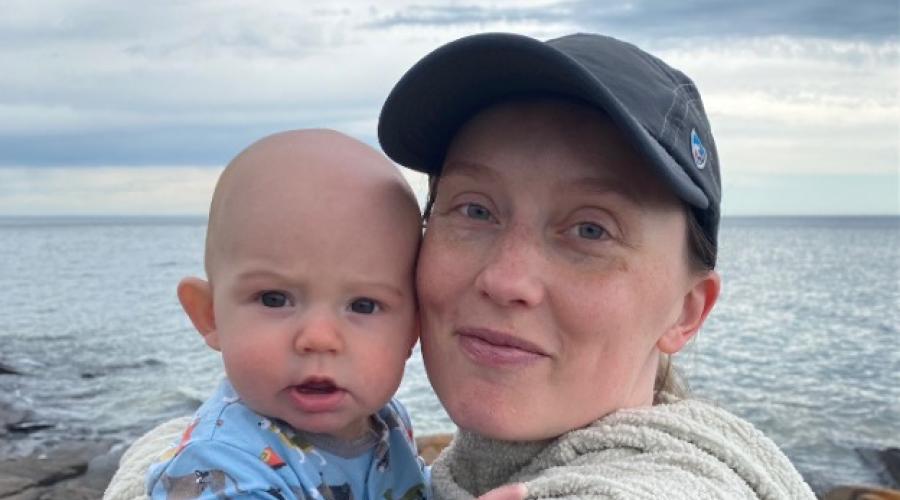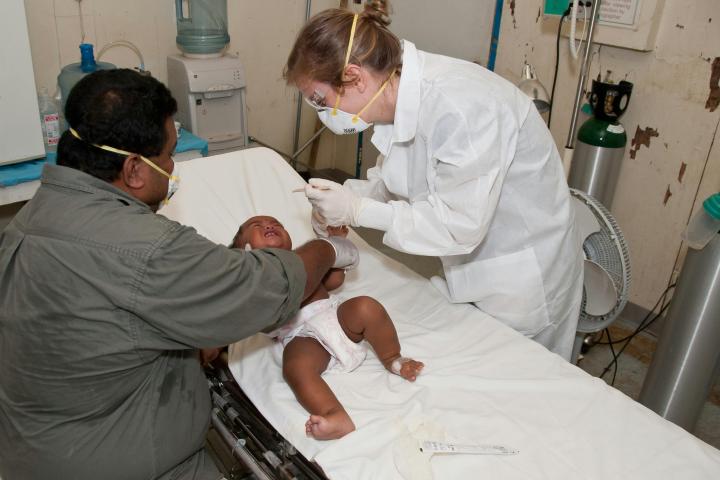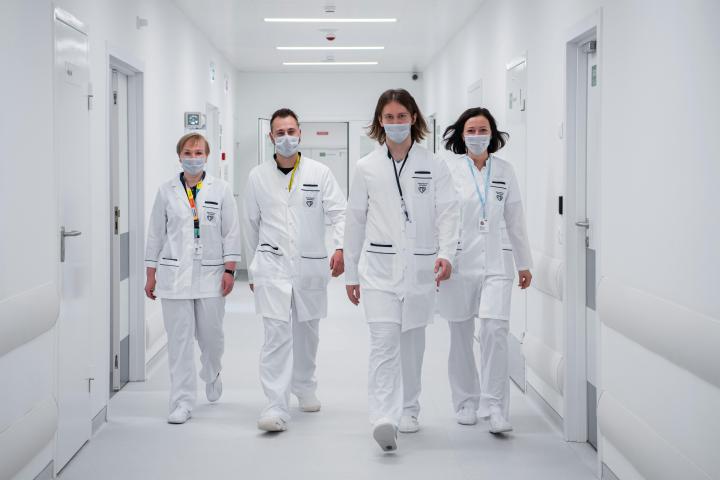
Healthcare Insights: Inside View - Doctors Organizing a Union in Minnesota
John August
In the February edition of this column I wrote about the growth of national trends among doctors to achieve a unified voice. In an article which appeared in the New York Times on February 5, 2023, Dr. Eric Reinhart wrote: “Regardless of whether we act through unions or other means, the fact remains that until doctors join together to call for a fundamental reorganization of our medical system, our work won’t do what we were promised it would do, nor will it prioritize the people we claim to prioritize. To be able to build the systems we need, we must face an unpleasant truth: Our health care institutions as they exist today are part of the problem rather than the solution.”
These sentiments are what motivated and sustained 130 doctors in the Minneapolis, MN region to win union representation rights with Doctors Council SEIU. I recently had the privilege of speaking with two doctors involved in the Minneapolis organizing effort, as well as with the Organizing Director for the Union. I can summarize the motivations, insights, and passions from Drs. Jess Boland and Katie Esse this way: their commentary related to a loss of control over their practice of medicine and loss of control over the patient-doctor relationship. Their experience included intervention by insurance companies and other intermediaries about necessary medication prescriptions overruled by “outsiders,” scheduling of appointments through central booking which eliminates continuity of care by the doctor, no transparency of decision-making by administration when it comes to overall policy which directly impacts patient outcome and experience, no desire for input from doctors by the administration about improving protocols and procedures which are clearly negative for patients and doctors, overall, intensifying fear of the corporate model and shareholder interests in the growing private equity and for-profit control of medicine that override medical knowledge and practice, unilaterally imposed untenable hours of work and coverage, feeling trapped with no alternatives. They described personal financial losses, even though they are salaried, employed doctors, due to errors or incomplete coding.
In a National Labor Relations Board (NLRB) representation election held in the last week of March 2023, a strong majority of doctors working at Mercy-Unity hospitals affiliates of the large health system Allina Health, voted to be represented by Doctors Council, which is among the largest unions of doctors in the U.S.
The final tally and certification of the unit by the NLRB has not occurred as of this writing. The Health System filed challenges to a large number of voters and filed objections to the election. Under current U.S. Labor Law, it is common strategy for employers who are on the losing end of a vote tally to use such delay steps as a way of trying to demoralize the union supporters as well as delay the employer obligation to collectively bargain. The union is confident of rapid adjudication in its favor.
The union also reports that over a thousand other doctors in the region have expressed interest in joining the union, and expects to file more requests for union elections very soon.
The delaying strategy by the health system is also designed to discourage other doctors from organizing. (See: this Time article for a comprehensive update on employer resistance to unionization).
According to the American Medical Association, nearly 8% of doctors belong to unions today, a relatively small percentage. However, the trend of growth among doctors joining unions is surprisingly brisk:
“The number of physicians who are members of unions is small in comparison to the size of the profession. Their numbers, however, are growing. In 1998, the AMA estimated that between 14,000 and 20,000 physicians were union members. In 2014, it appears that this number had grown to 46,689 (5.7 percent of 820,152 actively practicing physicians in the United States). In 2019, there were 67,673 physician union members. This represents 7.2 percent of the 938,156 physicians actively practicing in the United States – a roughly 26 percent increase from 2014 (emphasis added) in the percentage of physicians belonging to unions." (Source: Issue brief: Collective bargaining for physicians and physicians-in-training, 2023, AMA).
As Dr. Reinhart points out in his article, he advocates for the idea that the nearly one million doctors in the United States must band together in whatever form it takes to lead fundamental change in American health and health care. Unionization is one such path.
Drs. Boland and Esse are employed physicians who practice their specialties in a two-hospital affiliate of the Allina Health System: Mercy Campus in Coon Rapids & Unity Campus in Fridley. Dr. Boland is an intensivist who treats patients in critical care. Dr. Esse is a Neurologist, whose practice includes treating all age groups, including children to older patients who suffer from serious neurological disorders.
The Mercy-Unity Campuses are located 15-30 minutes north of the center of Minneapolis. As Dr. Boland described their place in the community: “These are well-resourced modern facilities which feel like urban medical centers but maintain a community environment and spirit.” She regards this culture as very rare and important to maintain. According to her experience, that culture is rapidly eroding.
Allina Health, the parent of the Mercy-Unity Campuses, operates 12 hospitals and 90 clinics in Minnesota and Western Wisconsin, employing 29,000 people. As of February 2023, revenues totaled $4.9 Billion (Becker’s Healthcare, February 14, 2023).
Dr. Jess Boland is a new doctor. Originally from Wisconsin, she attended medical school at the University of Wisconsin. Pictured here with her son, Whit, she took up medicine due to her love of science as a young student. What influenced her to choose medicine was ultimately her strong desire to meet people and to know them. “What better way to combine her love of science and people,” she told me.
After medical school, she trained in the Emergency Department at Hennepin County, one of the nation’s many great public health systems, which serves the greater Minneapolis metropolitan area

For the past three years, she has been a staff intensivist at the Mercy Campus.
I asked Dr. Boland what motivated her to be involved in organizing the Union.
She believes that one of the great strengths of the hospital is that it is a full-service hospital based in communities, but fears due to corporate structures and decision-making, it will become a “referral hospital” meaning that it will see patients sent there from all over the area and lose its community identity. She indicated the community identity is what makes it a great place to be: “You get to know the people, and they know you.” She fears the direction of hospital decision-making will erode that.
Dr. Boland believes that what is happening in the Allina system is happening to everyone in medicine. She doesn’t think Allina is a bad place to work, rather, the trends in decision-making and organization are what worry her the most. “The administration runs the mission of the hospitals,” she told me. This dynamic replaces the doctor’s knowledge of and relationship to the patients. She fears private equity and shareholder priorities will further supplant the doctor’s decision. As such, she feels that she needs a tool, the union, “ in order to better leverage the rights and benefits that come with unity.”
Dr. Boland shared her experience during the pandemic, which frames much of her experience and thinking about the necessity of a collective voice. She spent much of her duty in the Emergency Room (ER) at the height of the outbreak of COVID-19. The ER had long wait times, with many very sick people waiting, waiting to be seen. People died waiting.
She said that as a doctor, there is nothing worse than to see people suffering and dying and feeling helpless to respond. She identified this situation as “the worst betrayal of patient care.” She knew that as scientists and critical thinkers, there was opportunity for collaborative review and brainstorming about how to reduce wait times and to move patients through the ER more effectively. However, the doctors were never asked for their opinion. “The administration followed its own protocols with no input. The results were disastrous,” Dr. Boland summarized.
Dr. Boland is not singling out Allina; rather, she believes that the same situation exists everywhere: corporate medicine is breaking its covenant to engage its doctors and to not ask for frankness in response.
Allina issued a letter to the community, which galvanized doctors’ feelings and sentiments about how they were left out of decision-making, according to Dr. Boland.


From inside the hospital, the doctors and the patients suffered and had no role in trying to mitigate the tragedy. From the perspective of Dr. Boland and others, the sentiment expressed in the letter created the impression that the tragic outcomes were inevitable.

Dr. Katie Esse is a Neurohospitalist at the Mercy-Unity Campuses of Allina. She shared that she chose medicine for similar reasons expressed by Dr. Boland. She was interested in the sciences, including social sciences like anthropology and linguistics, but chose medicine because of the opportunity to gain a “window into peoples’ lives.”
After medical school in Minnesota she took a year off and had the opportunity to do a research project with a psychiatrist in Tanzania, furthering her interest in neurology. Upon her return she had her residency at Tulane Medical School in New Orleans, shortly after the impact of Hurricane Katrina. She stayed there for five years and then did her fellowship at the University of Minnesota.
Based on her experiences in Africa and in New Orleans, she shared that her perspective on medicine is shaped from the point of view of the underserved.
Dr. Esse then took a position at Hennepin County as an attending physician.
She was recruited to come to Allina as a Neurohospitalist serving adults.
She thought about organizing a union early in her career, going all the way back to residency. In 2015 she met with a friend who was a union organizer, but determined that there was not yet enough appetite among her colleagues for such an effort.
In the years since then, Dr. Esse experienced what she calls: “an erosion of ownership of her profession toward corporate medicine,” where decisions about care delivery are made only at the top of the organization.”
Then the pandemic hit. She has seen an erosion of the doctor-patient relationship over the years, but the pandemic intensified this trend.
Over the years, she has experienced that patients tend to be sicker by the time they come to the hospital. She notes that many patients are distrustful of the medical system and of doctors. It seems to her that there is a generalized perception that “medicine no longer lives up to its values.”
A theme emerged from her experience: “that communications between doctors and patients have become difficult, and at times impossible. So much communication now occurs through centralized call centers, making it more and more difficult to have direct communication for referrals and follow-up with other providers of care for her patients.”
In her current practice, she must cover cases across 29 different hospitals both inside and outside of the Allina system. For her, it means she cannot spend the kind of time she would normally do with each patient. From the patients’ perspective, it is as though they are not heard because they cannot see the same doctor from one visit to the next.
In the post-pandemic world, patient needs have increased, while at the same time:
- Patients have more untreated conditions
- There are fewer staff
- There are fewer beds
She has experienced growing interruption and intervention in decision-making regarding prescribing medicines for her patients by insurance intermediaries. This adds tremendous stress to the life of a doctor when the doctor’s judgment is overridden and the doctors has little ability to advocate for patients.
Another major change in her medical practice now requires her to spend a great deal of time in telemedicine visits. There are advantages to this for the patients, but for her and her colleagues the hours of work and the volume of cases is overwhelming. At times she had to work 36 hours straight two days a week. She has seen doctors leave the hospital due to the hours of work required.
Through unionization, Dr. Esse hopes for a “seat at the table” to enhance transparency and improvement in the patient-doctor relationship. Her longer-term vision is that a national grass-roots movement for change must evolve.
She also realizes that unionization is not the only answer. Rather it is a step that brings hope; hope that valuable patient-focused input can return to the practice of medicine.
Will Doctors Organize?
That is the question I raised in the February issue of Healthcare Insights. In that article, I concluded:
“It would appear that the answer lies in how doctors respond to what is an original moment in history: the conditions that doctors face each day have reached the depths of demoralization and at the same time the overwhelming majority of doctors have seen their employment status shift from independent practitioner to employee.
Additionally, as the interest among doctors grows to band together, these activities and considerations among doctors are occurring in the same moment of heightened attention to workers in the U.S. organizing their workplaces.”
Can traditional organizing and collective bargaining meet the challenges and needs of American workers and doctors in particular?
Certainly, traditional organizing and collective bargaining can address the issues of wages, hours, and working conditions. At the same time, so much of the challenges that workers in general and doctors in particular face today are issues that go far beyond the scope of traditional collective bargaining: diversity and equity, quality of work, sustainability of employment, and more and more a recognition that without voice in decision making about product quality and the nature of work itself, work-life will continue to be contingent and unsatisfying.
We are living through a period many call the Great Resignation, a time when people are making serious personal decisions about how to return to work after decades of poor wages and alienating work systems and conditions.
As exemplified by the experience shared by Drs. Boland and Esse, so much of what they describe as their motivations to unionize go to the heart of managerial control and traditional management rights. To repair and re-define that fundamental, intrinsic need for control over the patient-doctor relationship means that collective bargaining itself must be transformed.
Reform of U.S. Labor law will not come fast enough, and even if it did, a new set of rules is not likely to enable the achievement of the goals of workers of all kinds.
Drs. Esse and Boland are organizing in order to address and transform the conditions at the heart of their professional lives which they believe are under the control of a transformed health care delivery system.
We will watch closely these efforts in Minnesota and elsewhere, and continue to report on the trajectory of the question: Will Doctors Organize?
John August is the Scheinman Institute’s Director of Healthcare and Partner Programs. His expertise in healthcare and labor relations spans 40 years. John previously served as the Executive Director of the Coalition of Kaiser Permanente Unions from April 2006 until July 2013. With revenues of 88 billion dollars and over 300,000 employees, Kaiser is one of the largest healthcare plans in the US. While serving as Executive Director of the Coalition, John was the co-chair of the Labor-Management Partnership at Kaiser Permanente, the largest, most complex, and most successful labor-management partnership in U.S. history. He also led the Coalition as chief negotiator in three successful rounds of National Bargaining in 2008, 2010, and 2012 on behalf of 100,000 members of the Coalition



